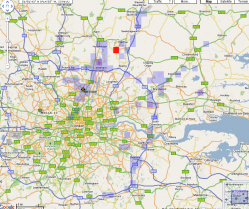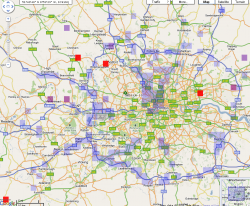My original post was
> I have old school packet question for you all from someone who is still
> learning....
>
> In an attempt to be a good citizen, I have picked up a deviation meter
> and am going round tweaking various trackers and digis that I use or
> am responsible for rather than using the traditional "by ear" method.
>
> I have several TNCs and radio combinations in use but there is always
> a difference in the low and high tone deviation, e.g. when my OT1+ has a high tone deviation of 2.4KHz, the low tone is only at 1.5Khz. I
> understand that this is normal and why from
> (http://www.febo.com/packet/layer-one/transmit.html ) but my question is what do I set the deviation at for the high and/or low tone at for
> a 12.5KHz channel? I asked this question on the UKAPRS forum and got
> several different answers (ranging from 0,9 to 2.4KHz). Whilst I
> appreciate the time that has been put into providing these replies, I
> am not much further towards knowing which is right so am asking a
> larger audience.
>
> I am not trying to start a fight, I just want to understand!
>
> Thanks in advance for your help es 73
> Steve M0BPQ
And WA8LMF, Stephen responded:
The answer is "It depends" ! Many parts of Europe are now using
narrower deviation than the traditional standard of 5 KHz peak
deviation. (The Euro versions of many Japanese radios now have menu
options for either 2.5 or 5 KHz peak deviation.)
In North America, where 20 or 25 KHz channels and 5 KHz peak FM
deviation still prevail for amateur radio , the high tone should be set
at about 3 to 3.5 KHz deviation. [Commercial land-mobile &
public-safety users in the US are under a federal government mandate to "narrow-band" to 2.5 KHz in the next year or two. Amateur radio is not
affected, except that soon there will be a flood of cheap surplus
commercial hardware that will be illegal for commercial users.]
In Europe, in areas where the 12.5 Khz channels / 2.5 KHz peak
deviation are used (and the radio receivers have narrower IF filters) ,
the setting would be about half the above, or around 1.5 to 1.75 KHz.
In general, one wants the highest deviation on data to correspond to
about 60-70% of peak, in order to allow some tolerance for the
transmitter (or receiver) not being precisely on channel. If you
deviate to the maximum peak value (i.e. 5KHz or 2.5 as the case may be),
and the receiver was off frequency by even only 500 Hz, some of the
significant modulation sidebands would fall outside the edge of the
receiver passband, creating severe distortion and a high data error
rate.
Stephen H. Smith wa8lmf (at) aol.com
EchoLink Node: WA8LMF or 14400 [Think bottom of the 2M band]
Skype: WA8LMF
Home Page: http://wa8lmf.net


 RSS Feed
RSS Feed
